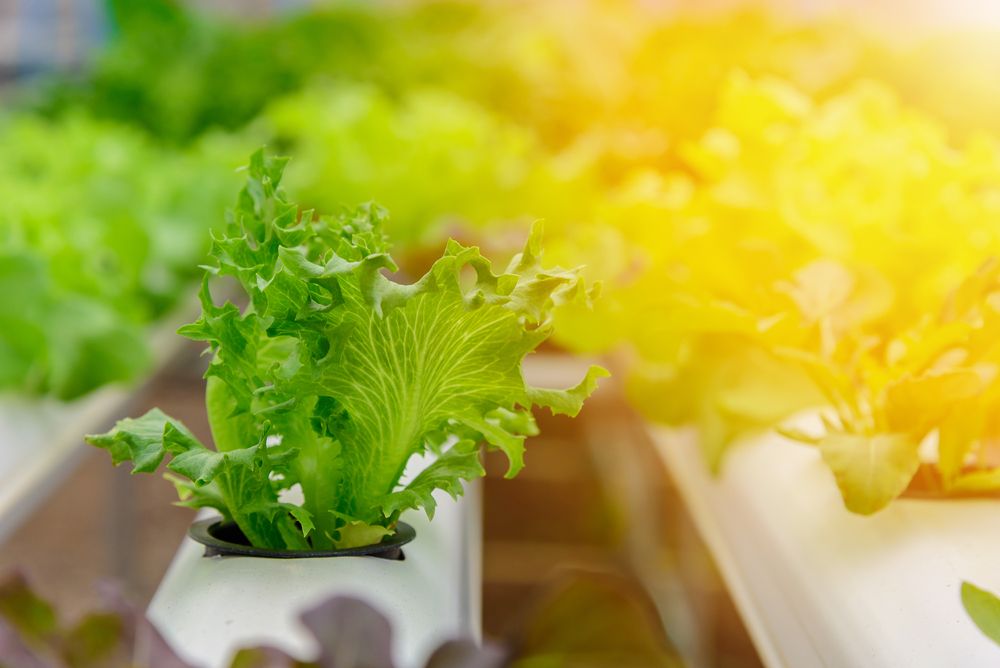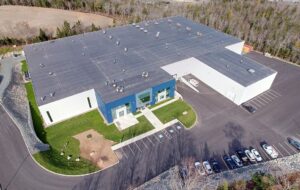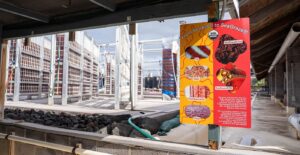Editor’s Note: B. David Vosburg is CFO and SVP Strategy of Crop One Holdings, an indoor farming technology company and producer of high-quality leafy greens in the Boston, MA area of the US under the brand FreshBox Farms. Vosburg is a serial entrepreneur and has an MBA from Yale University.
The lettuce industry in the US is worth just under $6 billion per year. If it follows the tomato industry, 50% of leafy greens will be grown indoors by 2030, a $3 billion opportunity. This transformation is inevitable with the ongoing trend of higher efficiency LEDs.
Indoor farming in cities and suburbs is giving new meaning to the term “local.” These operations are producing crops which had previously been grown only in certain geographies, because of the constraints of available land, water, and weather. This industry is now able to grow anything year-round, anywhere in the world.
In our growing units, we have measured a 99% reduction in water usage, and a 90%+ reduction in land use, compared to Salinas Valley lettuce farms, and since most indoor operations grow locally without any pesticides/herbicides/fungicides and 30 day+ shelf lives, indoor farming is a difficult proposition not to believe in.
And investors are starting to put some big bucks behind it. Indoor farming startups growing fruits and vegetables globally have raised $285 million since the start of 2017, with particularly large rounds for US-based vertical farms pushing the sector to its highest ever investment levels, according to AgFunder data.
The question is, who will win this market in the end?
No doubt you’ve seen several indoor agriculture companies that claim to be the best at growing leafy greens (lettuces, herbs, etc.) indoors. For any number of reasons, they claim to be better than their peers who are also vying for your funding dollars. But how do you tell the difference between them?
Here are seven simple metrics that will tell you if the company is worth your investment dollars.
1. Capital Density (CAPEX/plant site)
Most companies will tell you they grow more capital efficiently than everyone else, but you have to do the math. Calculate the number of plant sites they have per square foot, and the CAPEX required (all-inclusive) to build/buy that square foot of grow space.
Things to look for include companies that grow in vertical channels: the encasement and spacing take up so much space, they’re not able to achieve anything close to market-leading densities. Think cubic feet, not square feet.
If then it appears that that company is growing produce for a fraction of their competition’s Capex per farm, you will know they have a better ability to scale and turn over capital faster. For example, if a company grows for 25% of their competition’s CAPEX/plant site – the farm location — they can scale to four times the size with the same capital and will turn over that capital four times as fast.
2. Form Factor
There are now many players in the space building indoor farms in various formats: Pond greenhouses, Aquaponics, Warehouse growers, and Modular growers; each with its own inherent set of risks, particularly around contamination.
Pond greenhouses grow with sunlight — and at times some LED augmentation — in one, large single pond. They are the most susceptible to contamination as all plants share the same room. From a build-out perspective, it can take over 2.5 years to build one farm!
Aquaponics growers do control for contamination. However, plants are provided nutrients from fish feces, which can lead to contamination. The water temperature at which fish live is in the upper 70s Fahrenheit, several degrees above what is ideal for lettuce, so these growers will be limited in what they can grow and the yields they can achieve.
Warehouse growers can mass produce plants because they can grow them at high density to be some of the most efficient indoor farmers. Contamination can be a risk here as well; if a pest gets into a warehouse, an entire building of produce could be lost or recalled, costing the company tens or hundreds of thousands of dollars. There are several examples of hydroponic warehouse growers that have lost entire operations to a single pest or pathogen.
Modular growers come in many flavors, from divided warehouses to shipping containers. These growers can find a balance between controlling for infestation while growing efficiently. They can also match warehouse growers for density. In whatever shape or size they come, this appears to be the preferred growing approach for indoor farming – assuming that density inside the modular unit can be achieved. However, watch out for modular growers that sub-divide their farms into too many rooms as this will increase labor costs.
Be aware of form factors and decide which style best suits your investment needs.
3. Energy Efficiency (g/KWH)
Energy can be one of the most expensive components, if not the most expensive, of a completely indoor growing operation. This is a large part of the input costs of a labor efficient, completely indoor, growing operation. The common unit of measurement is how many grams of product a company can grow with one KWH of energy input.
What to watch for: many US companies have access to state-level agricultural energy pricing which can be as low as $.015 per KWH. Make sure the company is not ‘efficient’ because they simply have a low energy rate. We’ve all suffered through the end of subsidies in other industries, especially clean-tech!
Identify the number of grams that can be grown on the farm in a given month, then divide this by the number of KWH consumed per month. If the number is south of 40 or 50 – half the peak scientists have achieved in R&D labs– do not proceed unless there is a very clear technology roadmap showing how the company will achieve higher numbers soon.
4. Automation
Hiring is another expensive cost for indoor growers and will only increase in many urban places where indoor agriculture is applied. Automation is, therefore, going to become a critical aspect of reducing costs to increase gross margins. Some of the questions to ask:
1. How many dollars are spent in labor to grow one pound of lettuce?
2. How many hours does it take one person to seed, transplant, harvest, pack, and clean per unit of production?
3. Does the company use automation, and do they own that technology?
4. What is the company doing to find experienced/appropriate labor?
5. Plant Science
Farms grow living organisms. This is not an industry that produces widgets, no matter what anyone tells you. An experienced plant scientist is critical to any successful indoor farm. Identify this person and understand their background, knowledge, experience, and ability to control mold/fungus/pests as well as grow indoors in controlled environment and leverage plant stressors for yield.
The right person will understand every lever that can be pulled to increase yield and reduce costs: light spectrum, humidity, CO2, various micro-nutrients, water oxygenation, micro-pulsing, shadow-less lighting, sunsetting/sunrising, photoperiod and much more. This can contribute to a 50%-75% increase in yield over the competition, something competitors cannot finance their way out of.
Look for companies building competitive advantages around the non-commoditized aspects of growing – lighting, HVAC, and automation have plenty of very clever people around the world focused on improving efficiency in their own industries.
6. Commercial Approach
Brand is King. Those who have the consumer’s mindshare will be the ones to take home the value. Currently, grocery stores in the US are white-labeling many leafy green products so they can switch suppliers at will and reduce retail costs while maintaining margins. The consumer and the grocery store benefit; lettuce growers do not.
If the consumer is unaware of the brand, the company is not worth financing and will never be able to have the leverage to negotiate the price necessary for a venture return — and possibly not even a profitable business.
Ask a company about its consumer-facing products or plans.
7. Speed of Evolution
How quickly can a company change technologies? LEDs, farm management practices, controls and different types of automation are developing exponentially, industry-wide. Can you responsibly invest in a company that takes over two years to build out infrastructure?
The number of lumens/watt an LED produces is projected to quadruple in the next fifteen years, an annual compounded efficiency improvement rate of 10%. This means investing in a two-year project today will result in having lighting technology that is 21% less efficient than new entrants.
Keep track of technological advances and ask companies how they’re planning to stay on top.




